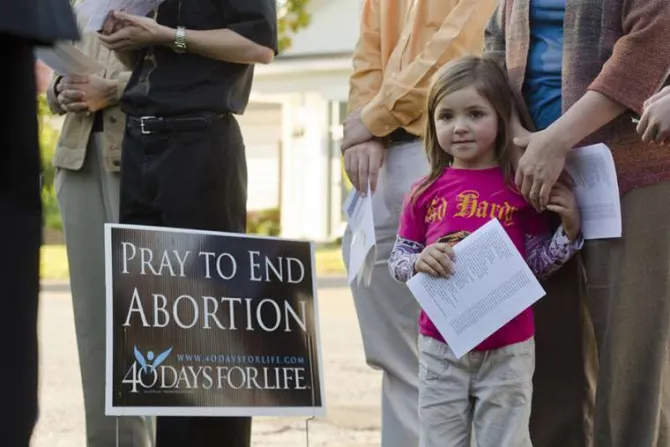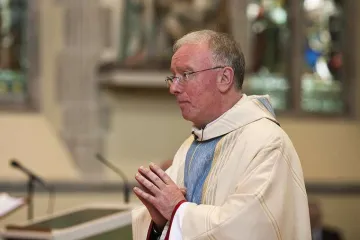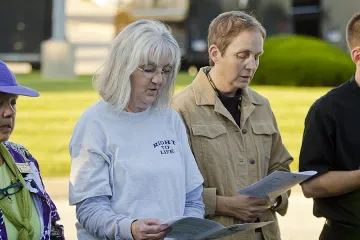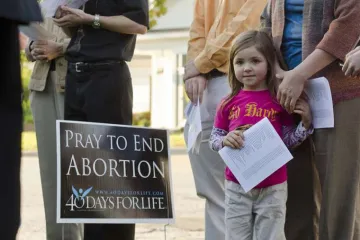London, England, Jul 2, 2018 / 11:39 am
The High Court of England and Wales ruled Monday that a buffer zone around an abortion facility in the London borough of Ealing is legal, in a move that will likely encourage similar buffer zones in the United Kingdom.
While the ban was found to interfere with the human rights of pro-life protesters, it was ruled July 2 that the local government had a right to decide it was a "necessary step in a democratic society."
"There was substantial evidence that a very considerable number of users of the clinic reasonably felt that their privacy was being very seriously invaded at a time and place when they were most vulnerable," said Justice Turner.
He added that the Ealing council was "entitled to conclude that the effect of the activities of the protesters was likely to make such activities unreasonable and justified the restrictions imposed."
The "public space protection order" (PSPO) that was passed in April was challenged by Alina Dulgheriu, a woman who was assisted by people she met at a pro-life vigil. Dulgheriu is now the mother of a six-year-old girl.
"I am devastated for those women that since the introduction of the Ealing PSPO, have not been able to access the loving help that I did," said Dulgheriu after the ruling.
The PSPO effectively bans public prayer and counselors who assist women within 100 meters (330 feet) of the Marie Stopes clinic, a leading abortion provider in London which performs around 7,000 abortions annually.
Bishop Philip Egan of Portsmouth has said he is "deeply concerned" by the imposition of such "no-prayer zones."
"To remove from the environment of the abortion clinics alternative voices is to limit freedom of choice. Indeed, research shows that many women have been grateful for the last-minute support they have thereby received," he said in April.
The High Court ruling comes in the days after the council in Glasgow proposed a motion that would look into the creation of a buffer zone around hospitals and abortion facilities.
This past Lent, there were a series of peaceful protests outside of hospitals and abortion facilities in Glasgow and throughout the U.K. as part of the 40 Days for Life campaign. Now, at least three Glaswegian councillors have supported a motion that would look into the creation of a buffer zone around these hospitals, where protests and prayer vigils would be prohibited.
The motion was proposed by Councilor Elaine McSporran of the Scottish National Party. McSporran argued for the creation of a buffer zone to "allow individuals entering [the hospital] to feel safe and without prejudice."
Although the councillors acknowledged that the prayer vigils and protests were entirely peaceful, and there were no reports of any sort of violent incidents, they support the idea of a buffer due to fears that there could be violence in the future.
"Normally these are peaceful and respectful individuals exercising their rights to protest and, although I am not aware of any incidents, it doesn't mean that they won't progress to be so," said Labour councillor Aileen McKenzie.
It is unclear whether the council has the ability to actually enact this motion and create the buffer zone.
Pro-life groups in Scotland have spoken out against the proposed buffer zone, saying that they have the same right as any other organization to protest for something they believe in.
(Story continues below)
The buffer zones are "against the principles we hold dear in our democracy," said John Deighan, Scottish chief executive of the Society for the Protection of Unborn Children, the U.K.'s oldest pro-life group. Deighen noted that trade unions are free to protest wherever they wish, and pro-lifers should be allowed to as well.
A similar buffer zone law in the United States was struck down by the Supreme Court in the 2014 case McCullen v. Coakley. The court unanimously ruled that the Massachusetts law prohibiting protests and prayers within a 35-foot radius of an abortion facility was a violation of the First Amendment's right to free speech.
The United Kingdom does not have similar protections of speech.






